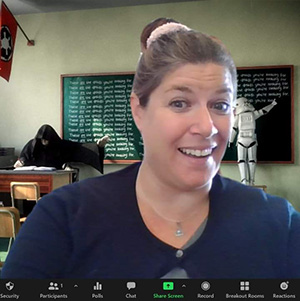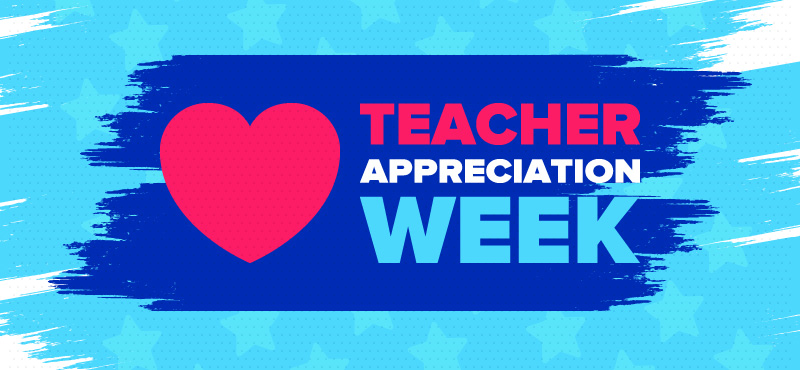In celebration of Teacher Appreciation Week, we sat down with one educator who goes above and beyond for her students – especially when it comes to strengthening their digital skills.
Why it matters: Having digital skills is crucial, especially when you’re entering the workforce. However, about one-third of Americans do not have basic digital skills – using a computer, accessing the internet, and sending email – that are now considered essential by most employers.
On top of teaching students their typical curriculum, many educators are now tackling this digital skills gap right from their classrooms.
Zoom in: Meet Carla Cerino

Carla Cerino, an instructor of Developmental English and ESOL at Middlesex Community College (MXCC), has recognized the importance of addressing the digital skills gap through her own teaching experiences.
“My students range in age from 17 to 78, and there is a similar range in ability when it comes to digital skills. At the beginning of the semester, some of my students struggle to log into their accounts – and they are not just the older students!”
Going beyond teaching writing and grammar, Ms. Cerino took matters into her own hands, equipping her adult learners with the digital skills they needed to thrive.
Here’s how she did it.
Getting Everyone Connected
During COVID-19 when learning had to take place from home, it became critical for Ms. Cerino’s students to have access to a high-speed internet connection and laptop.
Some of her students took advantage of affordable internet programs offered by local broadband providers, and MXCC began loaning out laptops to students for free.
- “Our college started a loaning program where students could sign out Dell laptops for the whole semester. In the first months of the pandemic, deans were even driving laptops to students’ houses. Now that the pandemic has subsided, I’m glad to see these programs staying in place.”
Maximizing Remote Learning
Many of Ms. Cerino’s adult students have work and childcare responsibilities that can make getting to campus a challenge.
Fortunately, MXCC uses digital tools to enable students to continue their education even when outside the classroom – including the ability to access cloud-based programs, like Office 365, for free. Students can also make virtual appointments at the tutoring center.
- “Many students don’t have cars, so they might not be able to get to school during my office hours. Using online tools, we can put the document up on the screen live – no matter where they’re located – and edit it together, in real-time. This also helps when students have to miss class.”
Teaching with Digital Learning Tools
Ms. Cerino also incorporates digital tools into her day-to-day teaching, which are especially useful for her students who struggle with taking notes and organization.
- “Using digital collaboration tools has made the class more inclusive. I can post “how-to” videos on Blackboard or Google Classroom so students can learn to use tools. And the online course modules become a repository for everything we’ve done together in class.”
She also has been able to bring in other voices and expertise by going digital in the classroom.
- “I might show a Khan Academy video during class, for example, or share exemplars of previous student work that students can access from anywhere. This makes the lesson more interesting for students and helps students who might learn in more visual ways.”
Incorporating Digital Skills into Assignments
To help her students get comfortable with using different technologies, Ms. Cerino gets creative with her classroom assignment requirements.
- Her first assignment each semester for her students is to log into the online classroom and post “hello” in their native language.
- When students give oral presentations, their slide decks must include specific layouts and animations to get them used to the Google Suite.
For Ms. Cerino, incorporating digital skills into her Developmental English class has been transformative – and intuitive.
“The internet was originally built for collaboration,” she says, “and this is still where it shines today – bringing people together and helping break down barriers.”
All Americans – including students – deserve access to a high-speed internet connection. That’s why cable broadband providers are working to move the needle by offering low-cost internet service, computer equipment, digital literacy training, and more.
You can help too! Join the #ConnectivityCounts movement to ensure states are successful at closing America’s digital divide.
